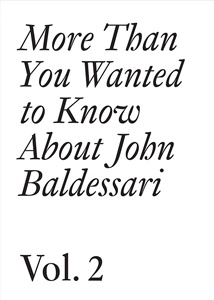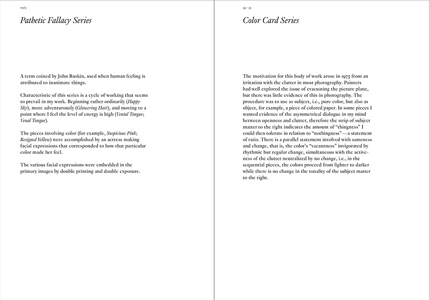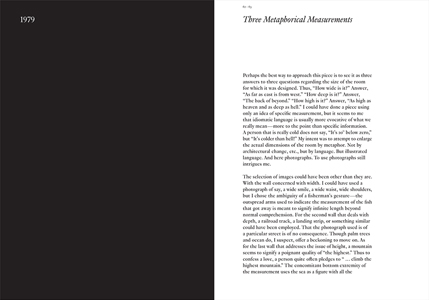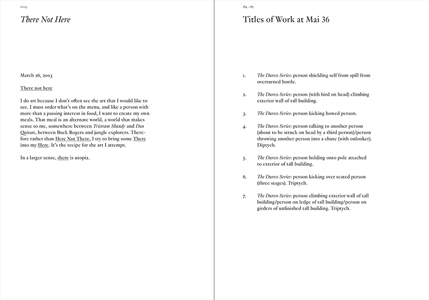This second volume of complete John Baldessari's writings traces the genesis and development of the artist's understanding of art in the early 1960s through to the present.
"More Than You Wanted to Know About John Baldessari" is the first complete collection of the writings of artist John Baldessari. Edited and with essays by
Meg Cranston and
Hans Ulrich Obrist, the texts in this two-volume set
(*) trace the development of Baldessari's understanding of art from the early 1960s through to the present, and includes an extended interview with the artist on the subject of his writing. The collection also includes numerous never-before-published texts as well as facsimiles of the original documents that illustrate Baldessari's composition of words, which achieve both literary and graphic impact.
In a pared-down style that is more practical than aesthetic, Baldessari writes by turns as a storyteller, moralist, teacher, and occasional gadfly using whatever form is needed to accomplish what the artist describes as the central task of art making: to communicate in a way that people can understand. When describing his writing Baldessari is typically concise and profound, "I never say edifice when building would do."
Baldessari's writing addresses a broad range of topics from the problem color in sculpture, to the problem of art students who need ideas, to problem of money in the art world, while returning throughout to the very focused set of issues that are key to his own work. Principle among them is Baldessari's love of words and his long-standing investigation into the similarity and possible interchangeability of word and image.
In his view, words have the advantage of being the most abstract though paradoxically the most common and understood form of communication. He writes that words make it possible to catch more of the world in the net, not just the picturesque. All the writings included in the "More Than You Wanted to Know About John Baldessari" are motivated by that impulse to catch more of the world and to ever expand the possibility of art.
John Baldessari (1931-2020) is a key proponent of
Conceptual art and one of the most important figures in contemporary art of the last forty years. Since his sensational "Cremation Project" in 1970, which involved burning all the paintings he had made between 1953 and 1966, his work has revolved around the relationships between language and image as forms of expression. In his painting, photography, film/video, collage, and reliefs, Baldessari has explored the mechanisms of media representation, as well as the subject of artistic work itself. Early on, Baldessari began integrating images and text from advertising and movies into his works and building up a large archive of film stills, publicity, and press photographs. This image material is then contrasted, cropped, and processed in numerous variations and visual realizations. From 1980, the artist worked mostly without text in series of photographs and pictures, while continuing to deal with conflicts and constructions of narrative content. Over the course of his oeuvre, overpainting, voids, gaps, and withheld information increasingly take on the function of the language evoked within the viewer.






